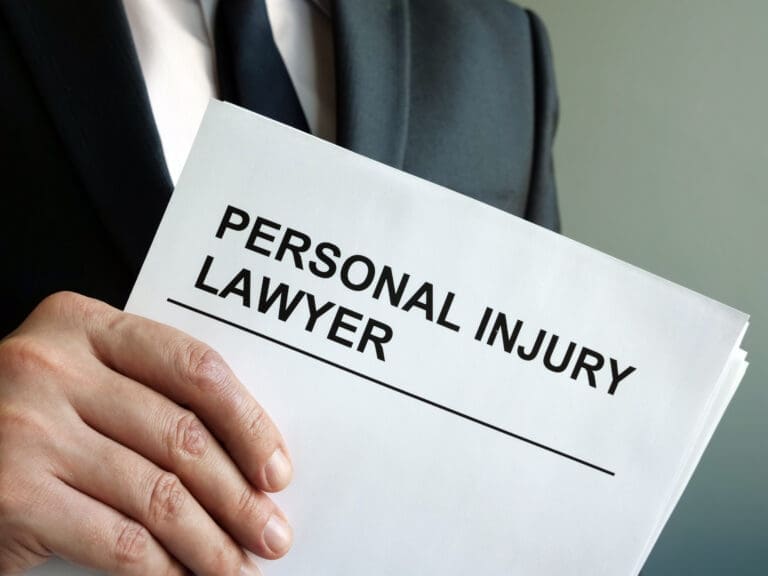
The American legal landscape is defined by its commitment to the rule of law, and nowhere is this more evident than in the realm of gun crime sentencing guidelines. The imposition of mandatory minimum sentences for firearms offenses has long been a cornerstone of federal and many state criminal justice systems. These laws, designed to deter violent crime and ensure uniformity in punishment, have sparked ongoing debate about their effectiveness, fairness, and impact on both defendants and society at large. As the nation continues to grapple with issues of public safety, criminal justice reform, and constitutional rights, understanding the intricacies of gun crime sentencing and the role of mandatory minimums is essential for legal professionals, policymakers, and the public.
At the heart of the federal approach to gun crime is a set of statutes that prescribe mandatory minimum sentences for a range of firearms offenses. The most prominent among these is 18 U.S.C. § 924(c), which imposes a minimum of five years in prison for using or carrying a firearm during and in relation to a crime of violence or drug trafficking. This sentence must be served consecutively to any other sentence, and the minimum increases if the firearm is brandished, discharged, or if certain types of weapons are involved. For example, brandishing a firearm raises the minimum to seven years, while discharging it increases the minimum to ten years. If a machine gun or a firearm equipped with a silencer is used, the minimum can jump to thirty years. These firearm offense sentencing rules are uncompromising, reflecting a legislative intent to send a clear message: gun crimes will be met with severe consequences.
The rationale behind mandatory minimum sentences is rooted in deterrence and incapacitation. Lawmakers have argued that by removing judicial discretion and imposing automatic penalties, potential offenders will be discouraged from carrying or using firearms during the commission of crimes. The theory is straightforward: if the risk of a lengthy prison term is certain and unavoidable, rational actors will think twice before arming themselves. This approach also aims to incapacitate dangerous individuals, keeping them off the streets and reducing the likelihood of recidivism. In practice, however, the effectiveness of mandatory minimums as a deterrent remains a subject of intense debate. Critics point to studies suggesting that these laws have not significantly reduced gun violence, while supporters maintain that they are a necessary tool for protecting communities.
One of the defining features of gun crime sentencing guidelines is the interplay between statutory minimums and the United States Sentencing Guidelines (USSG). The USSG was established to promote consistency and fairness in federal sentencing, providing a framework that considers the severity of the offense and the defendant’s criminal history. For firearms offenses, the guidelines assign a base offense level, which can be adjusted upward or downward based on specific factors. Aggravating circumstances, such as the use of a firearm in a violent crime or possession of a high-capacity magazine, can increase the offense level and result in a longer sentence. Conversely, mitigating factors, such as acceptance of responsibility or cooperation with authorities, can reduce the offense level.
Despite the advisory nature of the Sentencing Guidelines following the Supreme Court’s decision in United States v. Booker, mandatory minimums remain binding. Judges may not impose a sentence below the statutory minimum, regardless of the circumstances, unless the defendant qualifies for certain forms of relief. One such avenue is the “safety valve” provision, which allows for a sentence below the mandatory minimum if the defendant meets specific criteria, such as having a limited criminal history and not using violence or threats during the offense. Another is the possibility of a reduced sentence for providing substantial assistance to the government in the investigation or prosecution of others. These exceptions are narrow, and most defendants convicted of qualifying gun crimes will face the full force of the mandatory minimum sentencing regime.
El impacto de mandatory minimums is perhaps most acutely felt in cases involving multiple counts or recidivist offenders. Under federal law, each additional conviction under 18 U.S.C. § 924(c) triggers a higher mandatory minimum, often resulting in sentences that stretch into decades. The Armed Career Criminal Act (ACCA) is another statute that imposes a 15-year minimum for individuals with three or more prior convictions for violent felonies or serious drug offenses who are found in possession of a firearm. These laws are designed to target repeat offenders and those deemed most dangerous, but they have also been criticized for sweeping up individuals whose prior offenses may not reflect a continuing threat to public safety.
The consequences of mandatory minimum sentences extend beyond the individual defendant. Families are often left to cope with the absence of a loved one, and communities may experience the collateral effects of long-term incarceration. Critics argue that these laws contribute to over-incarceration, disproportionately impact minority populations, and undermine the principle of individualized justice. The “trial penalty” is another concern, as prosecutors can leverage the threat of a mandatory minimum to pressure defendants into accepting plea deals, even when they may have viable defenses. This dynamic shifts significant power from judges to prosecutors, raising questions about the balance of authority within the criminal justice system.
Recent years have seen a growing movement to reform mandatory minimum sentencing laws, particularly for non-violent offenses. Some states have eliminated or reduced mandatory minimums for certain crimes, and there is ongoing debate at the federal level about the need for greater judicial discretion. Proponents of reform argue that judges should be able to consider the unique circumstances of each case, including the defendant’s background, intent, and potential for rehabilitation. They contend that a one-size-fits-all approach is inherently unjust and fails to serve the broader goals of the criminal justice system.
On the other hand, supporters of mandatory minimums caution against weakening these laws, warning that doing so could embolden criminals and undermine public safety. They point to the need for clear, predictable consequences for serious offenses and argue that mandatory minimums are an essential tool for holding offenders accountable. Law enforcement agencies and victims’ rights groups often advocate for maintaining or even strengthening these penalties, emphasizing the importance of deterrence and retribution in the face of rising gun violence.
The debate over gun crime sentencing guidelines y mandatory minimums is further complicated by the evolving nature of firearms offenses. The proliferation of “ghost guns,” high-capacity magazines, and automatic switches has prompted calls for tougher penalties and new legislative measures. Lawmakers are also grappling with the challenges posed by gun trafficking, straw purchases, and the intersection of firearms offenses with other forms of organized crime. As technology advances and criminal tactics evolve, the sistema judicial must adapt to ensure that sentencing laws remain effective and relevant.
In addition to federal statutes, many states have enacted their own mandatory minimum sentencing laws for gun crimes. These laws vary widely in their scope and severity, reflecting differing philosophies about the role of punishment in promoting public safety. Some states have moved to eliminate mandatory minimums for certain offenses, while others have doubled down on tough-on-crime policies. The result is a patchwork of laws that can lead to significant disparities in sentencing outcomes depending on where the offense occurs.
The role of the judiciary in navigating this complex landscape cannot be overstated. Judges are tasked with interpreting and applying gun crime sentencing guidelines within the constraints of statutory minimums, the Sentencing Guidelines, and constitutional principles. They must weigh the interests of justice, public safety, and individual rights, often in the face of intense public scrutiny and political pressure. The discretion afforded to judges in some cases is a double-edged sword, offering the potential for mercy and proportionality but also opening the door to inconsistency and perceived leniency.
One of the most contentious aspects of mandatory minimum sentences is their impact on racial and socioeconomic disparities in the criminal justice system. Studies have shown that Black and Hispanic defendants are more likely to be charged with offenses carrying mandatory minimums and receive longer sentences than their white counterparts. This has fueled calls for reform and greater oversight to ensure that sentencing laws are applied fairly and equitably. The challenge lies in balancing the need for public safety with the imperative to address systemic inequalities and uphold the principles of equal justice under law.
La intersección de gun crime sentencing and constitutional rights is another area of ongoing debate. The Eighth Amendment’s prohibition on cruel and unusual punishment has been invoked in challenges to lengthy mandatory minimums, particularly for juvenile offenders and those with limited culpability. The Supreme Court has recognized the need for individualized sentencing in certain contexts, but the broader application of this principle to mandatory minimums remains unsettled. As courts continue to grapple with these issues, the boundaries of permissible punishment will likely continue to evolve.
In the context of criminal defense, understanding the nuances of gun crime sentencing guidelines is critical for attorneys representing clients facing firearms charges. Effective advocacy requires a thorough knowledge of the statutory framework, the Sentencing Guidelines, and the available avenues for relief. Defense counsel must be prepared to challenge the applicability of mandatory minimums, seek reductions through the safety valve or substantial assistance provisions, and advocate for fair and proportionate sentences. The stakes are high, and the consequences of a misstep can be devastating for defendants and their families.
Prosecutors, too, play a pivotal role in shaping the application of mandatory minimum sentences. Charging decisions, plea negotiations, and recommendations at sentencing all influence the ultimate outcome of a case. The discretion afforded to prosecutors can be a powerful tool for achieving justice, but it also carries the risk of abuse and arbitrariness. Ensuring transparency and accountability in prosecutorial decision-making is essential for maintaining public confidence in the criminal justice system.
The broader societal implications of gun crime sentencing y mandatory minimums cannot be ignored. The debate touches on fundamental questions about the purpose of punishment, the role of government in regulating behavior, and the balance between individual rights and collective security. As the nation continues to confront the challenges of gun violence, mass incarceration, and criminal justice reform, the future of mandatory minimum sentencing will remain a central issue in legal and policy discussions.
Emerging trends in sentencing reform reflect a growing recognition of the need for a more nuanced and individualized approach to punishment. The “second look” movement, for example, advocates for periodic review of lengthy sentences to assess whether continued incarceration serves the interests of justice. Some states have enacted laws allowing for resentencing or early release based on demonstrated rehabilitation, changes in the law, or new evidence. These reforms aim to strike a balance between accountability and mercy, recognizing that people can change and that the interests of justice may evolve over time.
At the same time, there is a renewed focus on addressing the root causes of gun violence, including poverty, lack of opportunity, and social dislocation. Lawmakers and advocates are exploring alternatives to incarceration, such as community-based interventions, restorative justice programs, and targeted investments in prevention and education. The goal is to reduce reliance on punitive measures and promote safer, healthier communities through a holistic approach to public safety.
El futuro de gun crime sentencing guidelines y mandatory minimums will be shaped by ongoing legal, political, and social developments. As courts, legislatures, and the public continue to debate the merits and drawbacks of these laws, the challenge will be to craft policies that promote justice, protect public safety, and respect the dignity and rights of all individuals. The path forward will require careful consideration of empirical evidence, constitutional principles, and the lived experiences of those affected by the criminal justice system.
In conclusion, the landscape of gun crime sentencing is complex and dynamic, reflecting the interplay of legal doctrine, legislative policy, and societal values. Mandatory minimum sentences have played a significant role in shaping the response to firearms offenses, but their future remains uncertain in the face of mounting criticism and calls for reform. As the nation seeks to balance the demands of justice, public safety, and individual rights, the ongoing evolution of gun crime sentencing guidelines will remain a defining feature of the American legal system. For legal professionals, policymakers, and citizens alike, staying informed and engaged with these issues is essential for ensuring that the pursuit of justice remains true to the nation’s founding principles.
Citations:
- Connecticut Prison Sentence Reduction Bill
- Federal Mandatory Minimums for Firearms
- Federal Sentencing Guidelines for Gun Charges
- Federal Gun Crimes and Mandatory Sentences
- Criminal Justice Reform on Mandatory Minimums
- Legal Updates on Repeat Offenses
- Advocacy for Sentencing Reform
- Mandatory Minimum Briefing Paper
- Second Look Movement in Sentencing
- Minnesota Mandatory Minimum Changes
- Federal Firearms Sentencing Defense
- Justice Department Sentencing Guidelines
- Trump Term Impact on Policing
- DC Gun Crime Crackdown Under Trump
- Biden Commutes Sentences for Drug Offenders
- Proposed Federal Sentencing Guidelines 2025
- Federal Mandatory Minimum for Gun Crimes
- Understanding Federal Mandatory Minimum Sentences
- Mandatory Minimum Sentence Statistics
- Mandatory Minimums and Mass Incarceration
- Overview of Mandatory Minimums
- Pennsylvania Legislation on Gun Offenses
- Impact of Mandatory Sentences for Guns
- Supreme Court on Mandatory Sentences
- Lessons on Mandatory Minimums and Crime
- Primer on Federal Firearms Sentencing
- Blogging Keywords for High Volume
- Federal Sentencing Guidelines Overview
- Federal Sentencing Guidelines for Guns
- Congressional Report on Sentencing Laws
- Finding Low Competition Keywords
- Minimum Sentence for Federal Gun Crime
- Congressional Research on Sentencing
- Mandatory Sentencing and Plea Bargaining
- Journal on Education and Justice
- Abolition of Plea in Sentencing
- Firearms Sentencing Primer Overview
- Chart of Federal Mandatory Minimums
- Case Against Mandatory Minimum Sentences
- Backgrounder on Gun Mandatory Minimums
- Justice Manual on Firearms Charges
- Sentencing Stats for Illegal Firearms
- 2021 Primer on Firearms Sentencing
- Brennan Center on Ending Mandatory Minimums
- Federal Gun Charge Defense
- Federal Court Sentencing for Gun Offenses
- Hunter Biden Gun Case Conviction
- DFL Effort on Gun Crime Sentences
- 2024 Federal Sentencing Guidelines Appendix
- Federal Sentencing Amendment 819
- Mandatory Minimums in a Nutshell
- OJP Report on Sentencing History
- Federal Firearm Charges Defense








